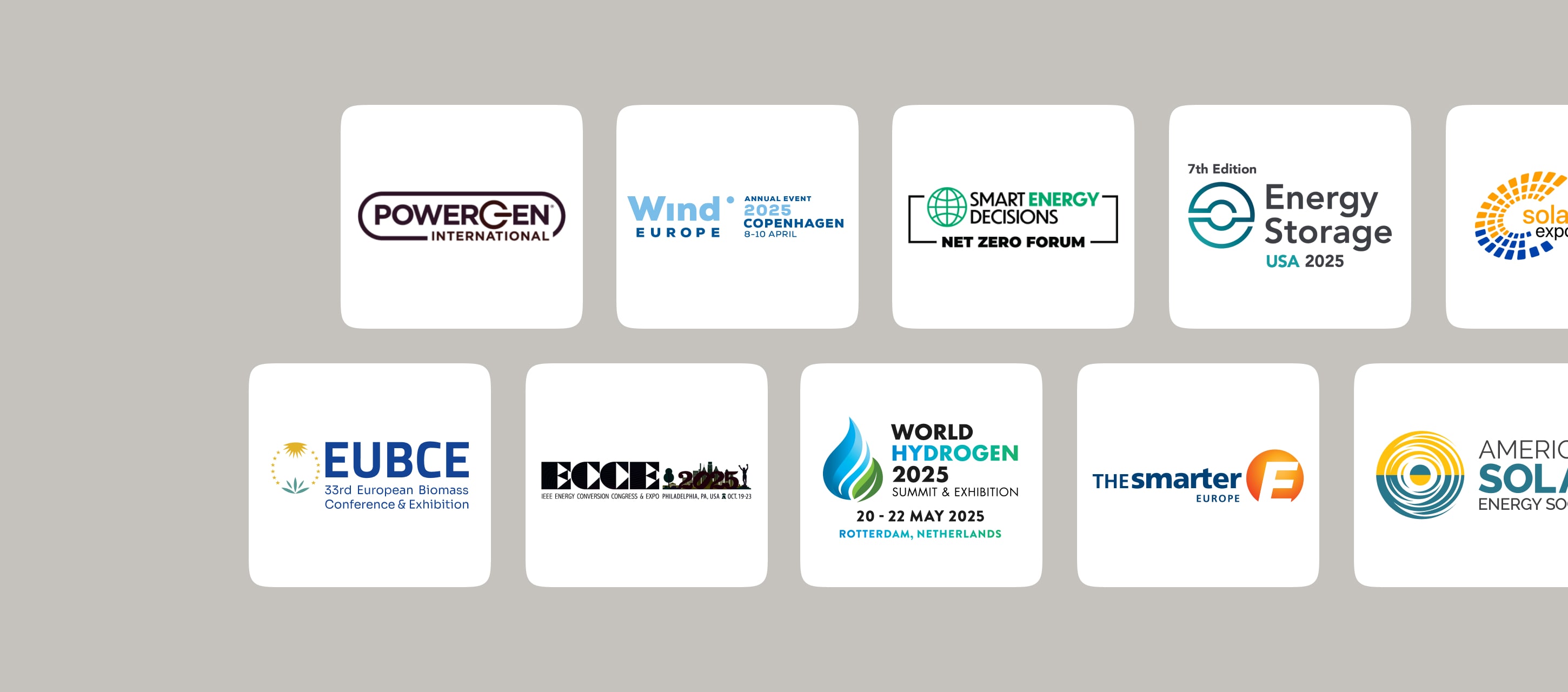The International Energy Agency (IEA) reports that renewable energy will power nearly 46% of global electricity by 2030. Solar and wind energy are at the heart of this shift.
However, when you operate in hazardous offshore environments, managing safety and wind turbine uptime can be challenging. Yet, completely manageable with the right tools and best practices.
Contents:
- What Is Safety Management in the Wind Industry?
- The Importance of Safety Management on the Wind Farm
- What Are the Key Safety Procedures for Wind Turbines?
- The Essential PPE and Safety Gear on Wind Turbines
- Safety Documentation and Reporting for Wind Turbine Safety
- How to Improve Safety Management on Wind Turbines
- Winding Up
What Is Safety Management in the Wind Industry?
Safety management in the wind industry refers to the policies, procedures, and technologies used to protect wind technicians and ensure compliance with safety regulations. It’s a structured process that identifies risks, evaluates their impact, and eliminates or controls them before they lead to issues.
When field teams, equipment, and operations meet safety standards, everything clicks. Safety improves, profits rise, and energy flows safely and efficiently.
Let’s break it down. Wind turbine safety management isn’t rocket science. But it is essential.
Here’s what matters:
- General Safety: Think daily safety briefings and emergency drills, keeping your team prepared for the unexpected
- Personal Protective Equipment (PPE): Helmets, harnesses, gloves (the basics that aren’t so basic when you’re 300 feet up)
- Safety Procedures: These standard operating procedures (SOPs) are the playbook. They ensure every turbine operation runs smoothly and safely.
- Compliance with Safety Regulations: Meeting OSHA, ISO, and local safety standards isn’t just a box to tick. It keeps your operations running without legal hiccups.
When all these pieces work in harmony, there are fewer risks and accidents, and the wind farm runs like clockwork: safe, compliant, and efficient.
The Importance of Safety Management on the Wind Farm
Why does safety matter so much for maintenance of wind turbines? Well, apart from the obvious (keeping human beings safe), it has a direct impact on operational efficiency and regulatory compliance.
Here’s why safety is a non-negotiable for safety management in the wind industry:
- Worker Protection: Working at dizzying heights, handling dangerous electrical components, and dealing with heavy machinery demands the most robust safety practices
- Regulatory Compliance: Falling short of meet safety regulations can mean hefty fines, operational shutdowns, and reputational damage
- Operational Efficiency: Safety management reduces downtime caused by accidents or equipment damage, leading to smoother operations
When safety is prioritized, wind energy companies are in total compliance with governmental regulations, and everything else falls into place: fewer accidents, more uptime, and better returns on investment.
Optimize Safety, Compliance, and Efficiency with Fluix
See how Fluix digital LOTO templates and automated workflows can streamline your wind turbine maintenance
What Safety Hazards Are Associated with Wind Turbines?
Let’s talk about the risks of wind turbine safety. Wind techs are hundreds of feet up, battling extreme weather: high winds, lightning, you name it.
And the inside of the wind turbine is no safer: think about navigating confined spaces, dropping tools, and falling. Even routine maintenance and the ever-present danger of high-voltage electricity can be risky.
Let’s take a closer look. (Warning: If you have claustrophobia or agoraphobia, you might want to scroll over this section.)
The Top Most Common Safety Hazards in Wind Turbine Operations:
- Working at Heights: Turbines can be over 100 meters tall, and without proper fall arrest systems, the risks are obvious
- Confined Spaces: The nacelle and tower interiors can complicate rescue operations
- Extreme Weather Conditions: High winds, rain, and lightning pose serious dangers to wind techs
- Electrical Hazards: Turbines generate high-voltage electricity, making electrical safety procedures vital
- Mechanical Failures: When incorrectly managed, moving parts like blades and gearboxes can cause severe injuries
What Are the Key Safety Procedures for Wind Turbines?
Now, how do we keep wind energy field teams safe from these hazards? We implement effective safety procedures.
Here are the critical safety protocols involved:
- Lockout Tagout (LOTO): Ensures turbines are de-energized before maintenance begins (P.S. Get your Lock Out Tag Out Procedure Template in PDF)
- Permits to Work: Authorization for specific tasks to ensure everyone’s aware of ongoing operations
- Emergency Exits: Clear evacuation routes in case of fire or other emergencies.
- Risk Assessments: Identifying potential risks before starting any task
By following these steps, wind farm operations can avoid accidents and maintain regulatory compliance efficiently.
Read More Read More How Drax completes turbine maintenance inspections over 2 times faster with digital forms
The Essential PPE and Safety Gear on Wind Turbines
Due to the high risk involved in wind energy operations, having the right personal protective equipment (PPE) and tracking its use can mean the difference between a safe shift and a serious incident.
Wind techs, your safety is everyone’s top priority. Here are the five essential types of PPE and safety gear to keep you safe up there.
- Fall Arrest Systems: Harnesses and lifelines for working at heights
- Helmets: Protection against falling objects
- Protective Clothing: Fire-resistant and weather-appropriate gear
- Gloves and Safety Boots: For electrical protection and slip resistance
- Eye and Ear Protection: Against debris and loud machinery
The Wind Energy ROI Guide
See how Fluix can help you simplify inspections and maintenance, cutting operational costs and saving hours


Safety Documentation and Reporting for Wind Turbine Safety
Let’s face it: safety documents aren’t the flashiest part of the wind energy industry. However, for EHS managers, HSE coordinators, and compliance officers, it’s the backbone of safe, efficient operations.
From tracking incidents and near misses to passing audits and proving compliance, accurate reporting keeps wind farms running smoothly and wind techs safe.
What safety docs matter for wind energy teams in the field?
- Near-Miss Records: Learn from close calls to improve safety protocols
- Incident Reports: Log and analyze accidents to prevent future risks
- Audit Trails: Ensure every action is traceable
- Documentation Storage: Storing safety records for easy retrieval during audits
- Regulatory Compliance Docs: Stay audit-ready with up-to-date records.
- LOTO Procedures & Permits to Work: Ensure critical maintenance tasks meet safety standards
How to Improve Safety Management on Wind Turbines
This is where Fluix comes in. Safety management in the wind industry shouldn’t be complicated. It should be streamlined, efficient, and user-friendly to meet the extreme demands of field teams on wind turbines. Not only that, it should also increase your field teams’ efficiency and overall productivity.
Where does Fluix’s wind turbine safety software excel in wind farm safety management?
- Documentation Storage and Retrieval: No more digging through folders; everything’s digital and easy to find from one source of truth
- Remote Access: Teams can log and access critical safety reports and documents from anywhere, even offline
- Training Management: Keep training records current and teams compliant with easy-to-learn features
- Permits to Work: Manage permits digitally, speeding up approvals and improving overall visibility
- Risk Assessments and Reporting: Conduct assessments using real-time, verified data from the field
Winding Up
With the right processes in place, from LOTO procedures to real-time reporting, wind energy companies can reduce risks, boost efficiency, and stay compliant.
But why complicate it more than necessary? With streamlined safety management software, you can simplify documentation, speed up approvals, and give your field teams the tools required to go wherever the wind takes them.





